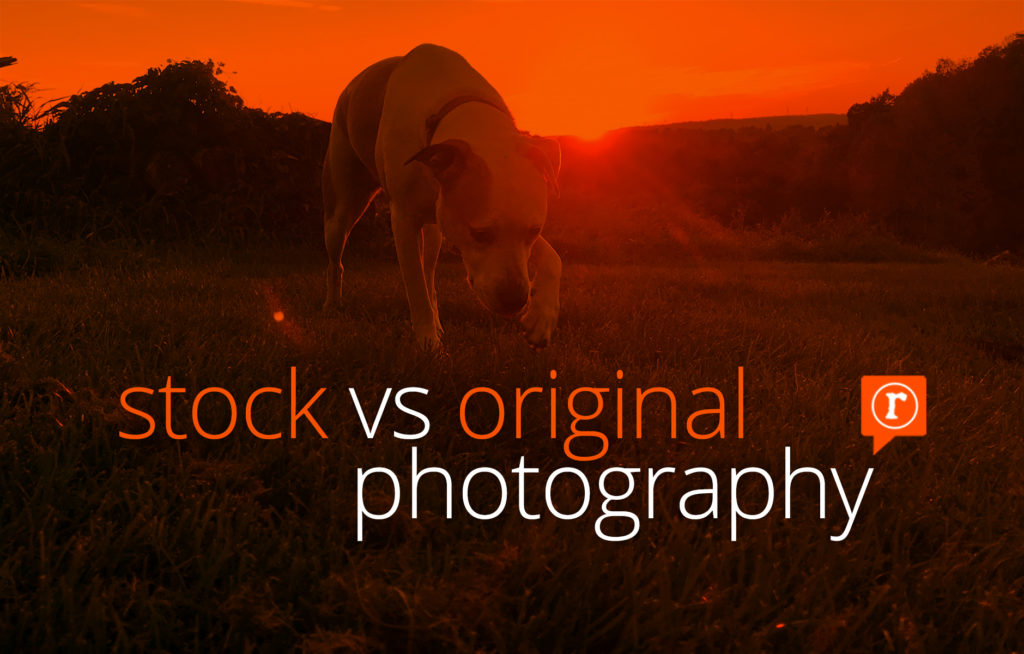
There’s an old adage that “a picture is worth a thousand words.” We couldn’t agree more. Finding the right imagery is essential to helping to define a brand and influence how customers perceive the brand.
Consider this:
“67% of online shoppers rated high quality images as being “very important” to their purchase decision, which was slightly more than “product specific information”, “long descriptions”, and “reviews & ratings” – MDG Advertising
So how do we decide between stock and original photography for a brand. Let’s take a look at the pros and cons of each.
Original Photography
Pros
You Own It – Original photography allows you control every aspect of the shot and therefore it’s the best representation of your brand. Since you own it, you can reuse it across platforms and create consistency in the mind of the consumers.
Build Trust – Original photos are authentic and therefore help build trust with customers. This can have a major impact on a brand’s ability to build customer retention.
Proven Success – Case studies, and our own extensive A/B testing, prove that original photos perform better in ads, social media and across all marketing communications. This ultimately leads to increasing sales.
FYI: The dog photo at the top of this page is an original photo that was taken by a staff member using an iPhone! The dog model pictured is our very own Izzy. Check her out here.
Cons
Cost – Original photography doesn’t come cheap. It’s not always easy to justify the expense of original photography for every customer interaction.
Time – Taking original photography, or hiring an agency or photographer, takes a long time. The ease of using stock images is often too tempting.
Quality – Original, may not mean better. If done poorly, original photography can do more harm than good.
Stock Photography
Pros
Cost – Stock photography does come cheap, very cheap.
Time – Stock photos for nearly any image imaginable are readily available within minutes.
Quality – For the most part, the quality of a stock image is never in question.
Cons
You don’t own it – Since stock photos for the most part are available to anyone, there’s a good likelihood that your competition could be looking at, and choosing, the exact same image.
Search Engines Know – Google will be able to determine whether an image is original or not (Pro tip – try dragging a stock image into a Google search bar). So, writing image tags for stock photos that others are also using doesn’t do much to help boost your ranking or help your brand image.

Performance – As we noted earlier, stock photography simply doesn’t perform as well. Users interact with images that easily draw attention, however eye tracking studies have indicated that users are able to recognize stock photos and often subconsciously ignore them.
Conclusion
Shoot your own damn photos already. We live in an age of drones, GoPros, and mobile phones & tablets with increasingly powerful cameras. It’s never been easier to shoot your own photography or find professionals to do so. However, we understand that stock has an allure that’s hard to resist and here’s where a little creativity goes a long way. You can’t own a stock image, but you can make it your own.
Oh, and that old adage that “a picture is worth a thousand words.” That is in fact a mis-quote people often make. In fact, the actual line is “a picture is worth ten-thousand words.” So choose wisely.
(Hear what his dog has to say about him)